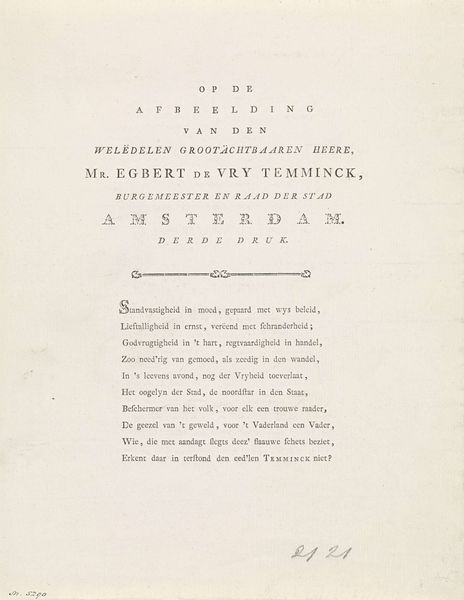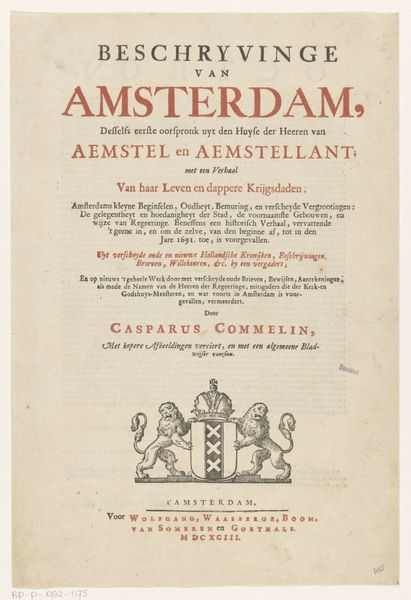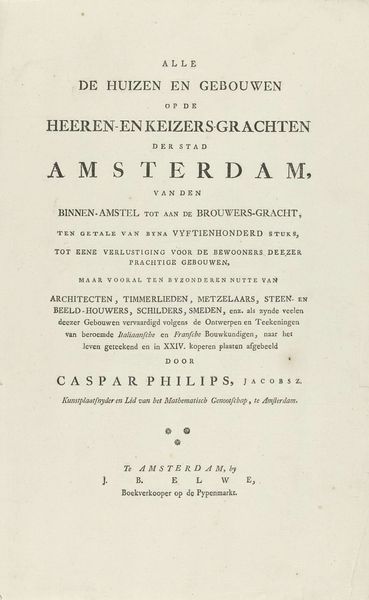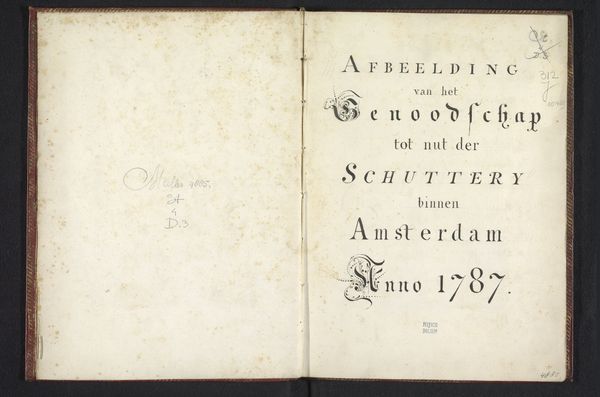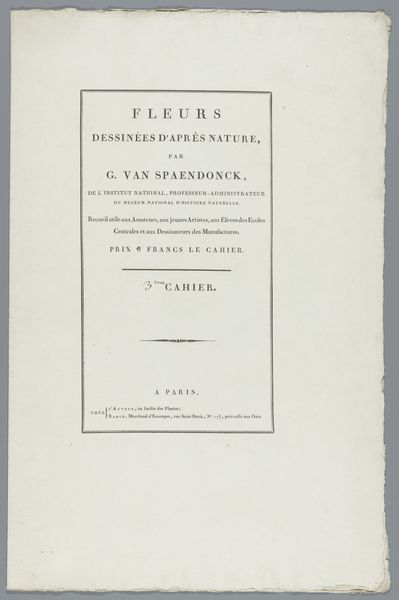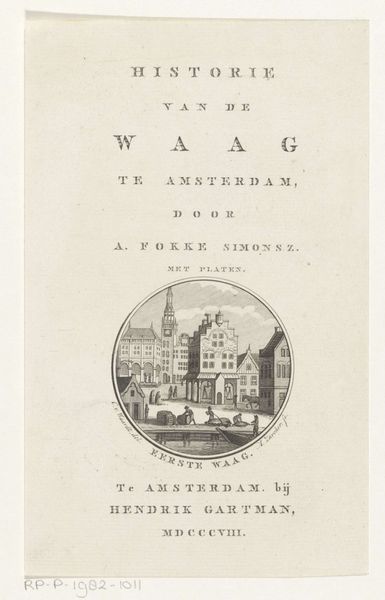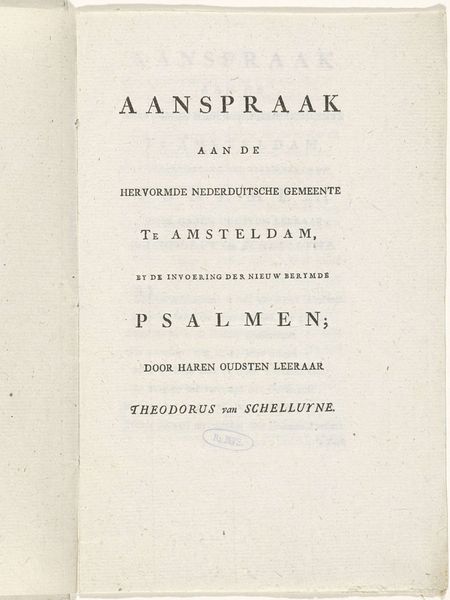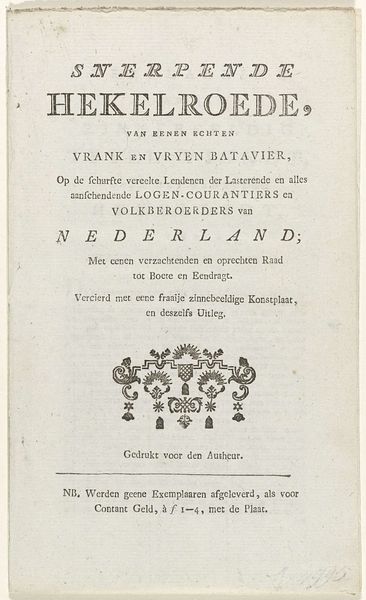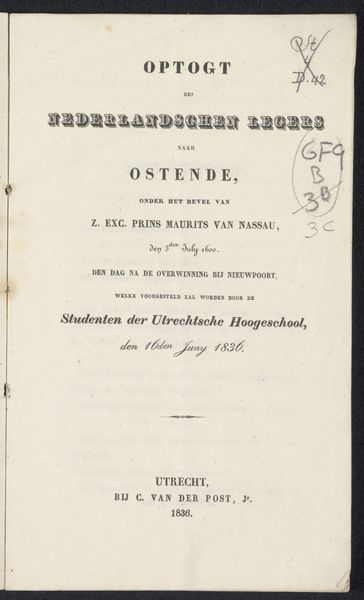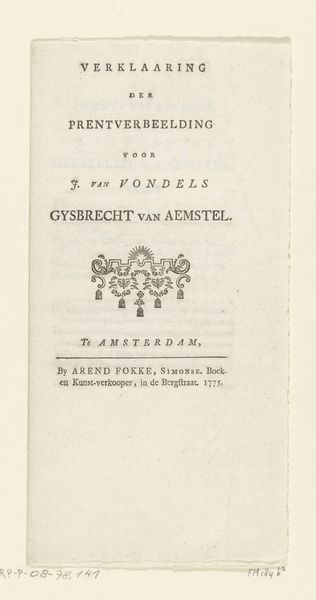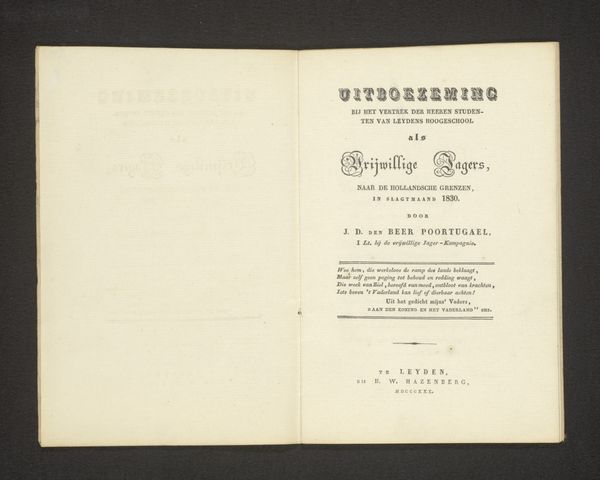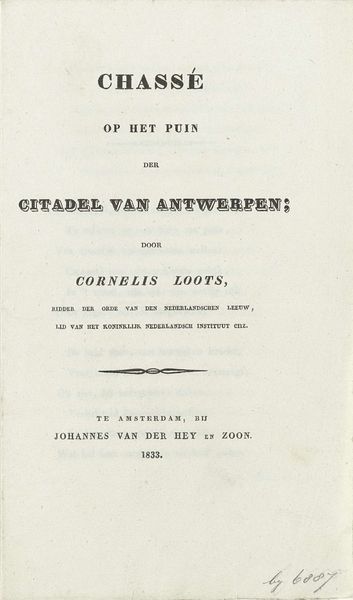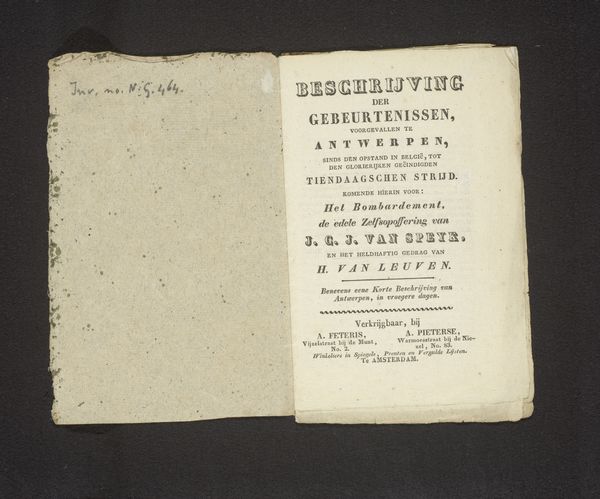
Historische beschrijving van Amsterdam met uitleg van bijhorend panorama 1806
0:00
0:00
#
type repetition
#
aged paper
#
homemade paper
#
script typography
#
paperlike
#
hand drawn type
#
fading type
#
thick font
#
classical type
#
historical font
Dimensions: height 204 mm, width 123 mm
Copyright: Rijks Museum: Open Domain
Pieter Johannes Uylenbroek’s book, published in Amsterdam in 1806, presents a historical description of Amsterdam and an explanation of its panorama. The very word "panorama," derived from "pan" meaning all, and "horama" meaning view, encapsulates a desire to capture everything. It mirrors humanity’s age-old quest for totality and understanding. This urge is not new. Consider the medieval "mappa mundi," attempts to represent the entire known world in a single image, reflecting both geographical knowledge and spiritual beliefs. The panorama is more than a map; it represents a world-view. It echoes the "theatrum mundi"—the idea of the world as a stage—a concept that enjoyed a revival during the Renaissance, a period which sought to understand human existence through the lens of classical antiquity. The collective memory embedded in such representations speaks to our persistent desire to grasp the totality of our existence. These efforts throughout time reflect our unending attempt to bring order to the chaos of experience.
Comments
No comments
Be the first to comment and join the conversation on the ultimate creative platform.
